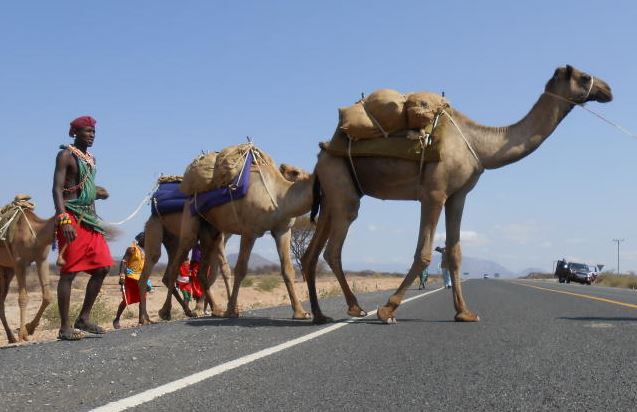×
The Standard e-Paper
Home To Bold Columnists

Participants of the camel caravan cross the Marsabit-Isiolo Highway. [Murimi Mwangi, Standard]
Born and raised in an area cut off from the rest of the country due to lack of critical infrastructure, Dalle Abraham, a resident of Marsabit, gives a clear picture of the disparity of a life before and after construction of the Isiolo-Moyale highway.